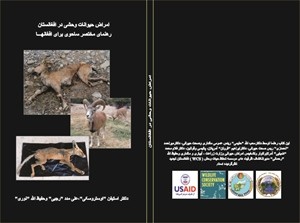
The handbook, which was written by the Wildlife Conservation Society’s veterinary team, is available in both Pashtu and Dari
USAID/ILG-NRMP/WCS
USAID has helped publish a portable reference on diseases common among wild animals
18 JULY 2012 | AFGHANISTAN
Afghanistan’s field guide on diseases common amongst wild animals has been welcomed as a useful portable reference for veterinarians, biologists, game guards and forestry workers.
The guidebook, which details common symptoms of each disease, also covers the level of risk to human beings. It is published in Pashtu and Dari by the Wildlife Conservation Society as part of USAID’s Natural Resource Management Program, which helps manage Afghanistan’s scarce natural resources.
Landlocked and mountainous, Afghanistan is geographically and climatically diverse. While its central highlands suffer harsh winters, the low-lying Sistan Basin of the southwest, the Jalalabad basin in the east, and the Turkestan plains along the Amu River in the north face blazing hot summers. Afghanistan’s geography makes for an amazing diversity of species. With USAID support, the Wildlife Conservation Society is using biodiversity conservation to create economic opportunity for local communities.This is where the wildlife disease guide comes in handy. Its initial print run was 2,000 and it is thought to plug a crucial gap. Afghan health professionals have long felt the acute lack of simple but practical literature on diseases that can be transmitted from wildlife to domestic livestock and humans.
USAID works closely with communities and Afghanistan's National Environment Protection Agency, and the Ministry of Agriculture, Irrigation and Livestock to create sustainable financial and social incentives, especially jobs, to support conservation and natural resource management.







Comment
Make a general inquiry or suggest an improvement.